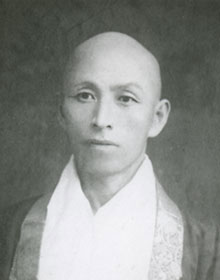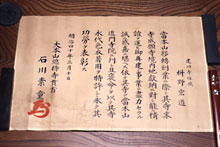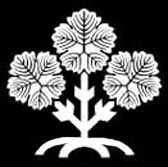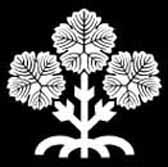the History
Soji-ji temple
Daihonzan, the two head temples/monasteries, are Eiheiji in Fukui and Sojiji in Kanagawa for Soto school. Six hundreds years ago, Sojiji was located in Noto peninsular of Ishikawa. In 1898, it burned down completely by accidental fire.
Subsequently, regarding the rebuild issue of the head temple, the idea of transfer to the capital area arose, and Jouganji of Tsurumi in Yokohama was nominated.
In 1906, the transfer to Tsurumi from Noto was officially settled. The 15th of Kenkohji, Daichi Kohdoh osho, exerted himself for transferring the head temple, and in 1907, acclaiming the exploits, the head priest of Sojiji admitted Kenkohji to be one of the special temples, where the special colored priest’s robe is permanently permitted to wear.

15th Daichi Kohdoh osho

the permission from Sojiji
Patronage
The official name of Kenkohji is “Tokuyuu-zan Zuiun-in Kenkohzenji,” and was built in 1560 by fifth Terao castellan Suwamikawanokami Umanosuke, who was serving under the house of Hojo in Odawara, inviting Daishuuchouyo osho to be its founder from Ryuusanji.
The mountain name, Tokuyuuzan, originally means braveness. It had been called “Zuiun-in” as a Suwa’s family temple before the fifth Terao castellan build Kenkohji. The name “Zuiun-in” came from the lord’s name to show the loyalty.
Regarding the temple name Kenkohji, it means to build with achievement, praising the bravery of Suwamikawanokami Umanosuke.
In proof of that Suwamikawanokami Umanosuke built this temple, Suwakaji, the substitute Japanese heraldic symbol of Suwa family, is still used as temple’s heraldic symbol.

The left is patronage/builder Suwa family's heraldic symbol.
The heraldic symbol of Kenkohji is originated from Suwa oak.


Heraldic symbols of Suwa great shrine
